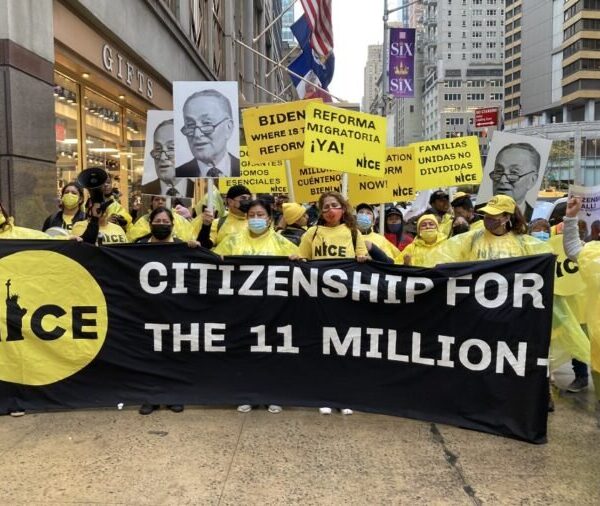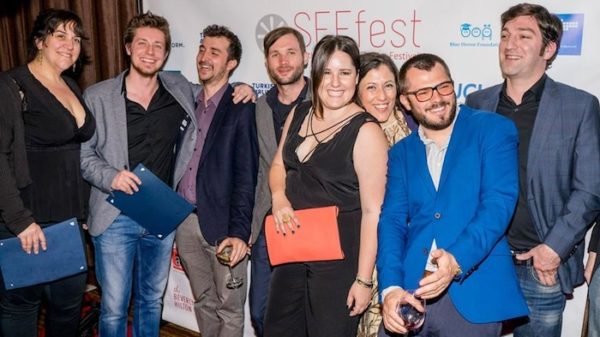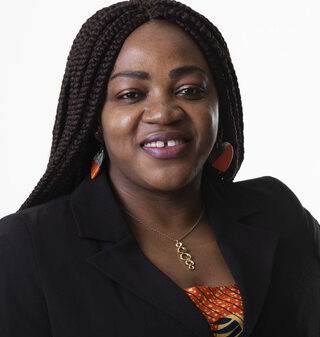Commentary from The Immigrant Magazine
Another clash with Germany’s Federal Court of Justice and Deutsche Telecom
We follow Authority Magazine’s, Jamie Hemmings, recent interview featuring Los Angeles based African American innovator, Mundi Fomukong, about Inspirational Black Men in Tech. Fomukong is manager of a tech company, Enovsys, that develops mobile phone system technology.
The discussion is tense but interesting. We were awed to read how German court judges used their system to stall, for almost ten years, a 2011 case brought by Enovsys against Deutsche Telekom (DT) for infringing Enovsys location-based service patent in Germany. Recently in December of 2020, after the German Supreme Court “BUNDESGERICHTSHOF“ finally squashed the merits of a lower court’s decision that initiated the stall, it immediately turned around and employed a legal maneuver seizing the inventor’s property in the same judgement, see German Supreme Court case X ZR 144/18. If this goes unchecked, it begs the question, how does this recent move not amount to institutionalized intellectual property theft?
According to the interview, the Munich district court, in stark contrast to the European Patent Office and other patent offices worldwide, stalled Enovsys’ infringement claim in 2012 by simply throwing out a last-minute ruling that DT’s mobile phone system is not covered by the Enovsys patent because the patent covers a system for paging services. However, eight years later, after the German Supreme Court confirmed that the Enovsys patent covers any mobile device that uses paging (which includes mobile phones), it turned around and seized the inventor’s patented property, absolving DT from licensing obligations. It is crazy, but true…
The plot to seize the property is deep as Enovsys had two appearances in front of the German Supreme Court, in ten years, because of a similar strategy employed by the lower courts. The German Supreme Court, even after confirming in its judgement of December 2020 that the Enovsys patented features were not disclosed in any reference prior to the invention (circa 1998), turned around and conjured a reason that the missing features were obvious in view of other features, plucked out of another reference, that were not discussed at trial or pleaded by the parties. Enovsys has recently asked the German Supreme Court in a recent violation of right to be heard motion “Gehoersruege“ to simply allow it to argue its case in view of features that were not discussed during trial and which the court concluded in its judgement does not support the missing patented features.
Folks, this is the highest court in Germany, operating in a system that prides itself in protecting property rights within the European Union. Irrespective, obviousness cannot be conjured out of thin air to seize one’s property without giving them a chance to respond. If this ruling is allowed to stand, it may amount to intellectual property theft. Let’s not forget that Deutsche Telekom is 31% owned by the German government.
Africans deserve better. The full interview here below…
Magazine, Making Money, Authority Magazine, An Interview With Jamie Hemmings
As part of my series about “Lessons From Inspirational Black Men In Tech”, I had the pleasure of interviewing Mundi Fomukong, an inventor from California, USA, and the founder of Enovsys LLC.
Fomukong is a wireless systems architect and holds a Master of Science in Electronic System Design, specializing on aircraft electronic systems, from Cranfield College of Aeronautics, Cranfield University, UK. Enovsys was founded in 2003 and develops mobile phone system technology. The company owns key patented technology worldwide, in the area of location tracking, location disclosure and privacy, geofencing and proximity determination, and mobile banking.
For at least a quarter of a century, Fomukong has not only designed and implemented cutting edge technology, but deeply involved in protecting and enforcing intellectual property rights. Fomukong is highly skilled technology professional, who routinely prosecutes patents in the US, Europe, Canada, China, Singapore, Australia, India and Japan. He also actively supports and coordinates intellectual property litigation efforts and strategy within the US and Germany.
Thank you so much for joining us in this interview series! Before we dive in, our readers would love to learn a bit more about you.
I reside in Los Angeles with my family and was born in Cameroon, West Africa. I attended college in England and moved to Southern California in the 1990s. I enjoy designing and developing mobile phone system technology — putting pieces together and drilling down to the nitty gritty. However, for circumstances beyond my control, I routinely find myself in the business of litigating intellectual property claims, relating to technology we create.
The nature of our business requires working around the clock to support local and international efforts. As one of the very few Africans involved in a business that hedges on next generation mobile phone system design, coupled with global intellectual property law and business, the experience has been unparalleled to none. On the surface, everyone is well educated, so fair play is expected. However, under the hood, as it concerns unauthorized use of technology and sales of large corporations, be ready for a never-ending “bruising” dog fight.
I remain grateful to my wife, kids, family, and friends for accommodating my schedule. To keep up, I exercise regularly and enjoy an iced shaken Martini cocktail at the end of a long day. Spiritually, I come from a generation of Presbyterians and attend our local church in Los Angeles, where I routinely serve as a deacon.
Can you tell us a story about what brought you to this specific career path?
Just before completing my undergraduate degree in Electronics with Computing in England, I saw a Cranfield College of Aeronautics flyer posted outside our laboratory. I took a moment to read up about the college and decided to place a phone call using, at the time, a British Telecom pay phone box. I was impressed by a graduate program Cranfield offered in Electronic System Design, specializing in flight electronics. Even though my application was late, I persistently called the executive assistant at the college, Mary Shields. Eventually the head of the college took notice and offered me a spot to join the program. Attending that college gave me a deep understanding of how electronic systems are designed, specifically integration of hardware and software components.
After moving to the US, I met my co-inventor Chesney, now deceased, at a local church in Los Angeles. He was a Californian businessman who traveled around a bit and had lived in England, I believe in the 1960s. We were from different generations, but became friends, and the rest is history.
Can you share the most interesting story that happened to you since you began at your company?
Back then when we started to develop mobile phone system technology, phones were mostly used for voice calls and pagers were used for text messages. Existing mobile phone system platforms were proprietary — as a guide, Apple and Google were not even in the mobile phone system market at the time.
However, as Telecom and Software companies had not synchronized their technologies to communicate with each other, we really believed we could talk to both sides to provide common interfaces to leverage a location-based services technology we had developed and much more. As we owned the intellectual property, we had plenty of discussions and reviews with key players in the industry. Interest was very high, but the cycle was pretty much the same — that is, after every successful internal review by technology and business departments, decision was pushed to legal and eventually outside counsel got involved. At that point, everyone stopped taking our calls until the company deployed the system. Initially, we were awed, but after being in the business for decades, we were just plain naïve or maybe stupid to believe large corporations would deal fairly…They don’t…
Can you share a story about the funniest mistake you made when you were first starting? Can you tell us what lesson you learned from that?
As reflected above, our belief that large telecom corporations will deal fairly in a technology transfer and licensing venture was a mistake. First, we had patent offices and examiners around the world review our technology extensively on multiple occasions. The process of prosecuting intellectual property claims in the US, Canada, Europe, India, China and other countries in Asia and Africa seem to be fair and well established and coordinated by designated representatives in each jurisdiction.
At that point, we thought that having your technology reviewed in multiple patent offices around the world by different examiners would translate to immediate licensing success, we were wrong. Little did we know litigation is almost always required and is a risky and brutal business. Little did we know that the patents granted to us by patent offices worldwide could be perceived differently depending on the court and rules a judge chooses to apply. As a guide, a court could pick a result and then look for a law to justify the outcome. As judicial orders are concocted by humans, hard not to hold your breath.
We saw that over and over again, same issues previously prosecuted and settled in Patent Offices globally ending up with a different result depending on the courtroom, judge and legal tool applied. At some point, it becomes not even about the intellectual property you actually own, but what a court will allow you to present. In the US, for instance, even after we were successful in getting a verdict against Sprint affirmed by the Court of Appeals for the Federal Circuit, I finally understood, in a subsequent matter, why lawyers would shop for jurisdictions that are “supposedly” patent friendly to litigate their cases. Mind you, the process of protecting intellectual property in most parts of the world has been streamlined and governed by rules and conventions that are known and proven to be fair. However, litigating the same intellectual property is a pricey and subjective process that depends on when, where, who and which legal tool is ultimately selected to apply at every turn.
Having been in the middle of technology design, intellectual property prosecution and litigation, lesson learned is that the litigation process can be streamlined such that it is also efficient for all. However, as it falls back on politicians, aligned to different business interests, to craft these laws to protect their interest (which is rarely that of the general public), very unlikely we see fair rules enacted anytime soon.
Can you tell us a story about the hard times that you faced when you first started your journey? Did you ever consider giving up? Where did you get the drive to continue even though things were so hard?
I met up with a firm in London to explore technology licensing opportunities in the UK, leading us to wind up in another matter in Germany in 2011. The German matter, relating to Deutsche Telekom, subsequently ended in intense litigation causing us to shuttle between Los Angeles and Germany for about ten years. It has been nothing but crazy as Deutsche Telekom is 31% owned by the German government.
To summarize, every essential lower court decision we received was concocted outside of the pleadings of the parties and injected “last minute” by the judges. As we found out in the German litigation process, German patent law supports use of an administrative procedure “Principle of Investigation” that gives the patent court the right to investigate any topic related to a case, even when not pleaded/submitted by the parties. However, when this procedure was applied by the court, it was only during trial to inject an off-the-cuff patent revocation decision in favor of one litigant, Deutsche Telekom, after it fell short in its pleadings. As a result, the reasoning backing up the decision was only disclosed later in a judgement — too bad, limited chance to argue back. However, as these were lower court rulings, we always had the opportunity to appeal to the German Supreme Court. As a matter of fact, we went to the Supreme Court twice in nine years to resolve these types of decision.
Even though the German Supreme Court was unable to uphold any of the reasoning concocted by the lower court to revoke our patent, it eventually moved in a July 9th, 2020 hearing to create its own reasoning, again, out of the pleadings of the parties, to claw back our intellectual property rights in Germany. Clearly a grotesque violation of due process. As a result, we filed a “Gehoersruege” motion in December of 2020 asking the court to not violate the right of the litigants to be heard on a pertinent subject matter introduced for the first time in a judgement.
As discussed earlier, these legal tools are there for courts to use when further investigation is required. However, in our proceeding, courts repeatedly used this tactic to claw back our intellectual property rights after clearly determining that Deutsche Telekom fell short in its pleading. What makes this unconscionable is that the Supreme Court resulted to using the same tactic even after it concluded, like all the patent offices worldwide who reviewed the same issue, that our core patented feature was missing from every reference that existed before it. However, by using this “Principle of Investigation” tool, the court, even when unable to find our patented missing feature in prior art references, was able to conjure an “obviousness” decision without any feedback from the litigants. In our most recent “Gehoersruege” motion filed to the court, we are now left to beg the Supreme Court to at least hear us on an issue that clearly came to be because of a blatant disregard of the right to be heard, which may amount to an abuse of judicial power. However, we remained confident that if our right to be heard on these issues is preserved, the result will be no different from what patent offices worldwide, including the European Patent Office, had asserted.
Deutsche Telekom is 31% owned by the German government. As you would notice, the difference here is the injection of a procedural maneuver, the last minute at trial and later in a judgment, to exclude one party from making their case.
Despite being advised such motions are rarely approved by the Supreme Court, it was easy to give up. Ultimately, we did not give up because the underlying circumstance warrants a fair resolution in order to maintain integrity in a court system that prides itself in protecting property rights. Absent, such a move to request a resolution, anyone could perceive this as some form of intellectual property heist.
None of us are able to achieve success without some help along the way. Is there a particular person who you are grateful towards who helped get you to where you are? Can you share a story about that?
Apart from family, friends and other colleagues, our business ended up relying on the services of law firms to stay afloat. As a minority developer with no initial financial backing, very few firms looked our way when we started. Irrespective, the Lyon & Lyon LLP partners in Los Angeles stepped up and effectively guided us in the 1990s, even continuing to do so after the firm closed. Also, Dovel & Luner LLP and the other firms who later joined to support our efforts globally have been helpful.
Read full interview Inspirational Black Men In Tech: Mundi Fomukong of Enovsys On The Five Things You Need To Know In Order To Create A Very Successful Tech Company









